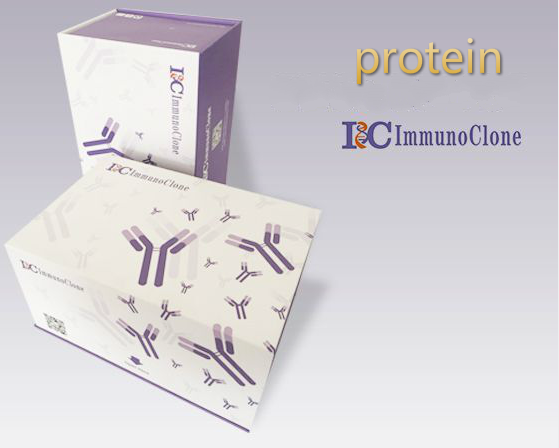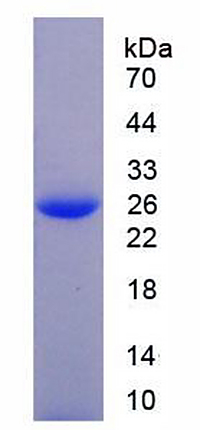

客服电话:021-61998208


氯化物细胞内通道蛋白1(CLIC1)重组蛋白
氯化物细胞内通道蛋白1(CLIC1)重组蛋白
Recombinant Chloride Intracellular Channel Protein 1 (CLIC1)
G6; NCC27; p64CLCP; hRNCC; Chloride channel ABP; Nuclear chloride ion channel 27; Regulatory nuclear chloride ion channel protein
[ PROPERTIES ]
Source: Prokaryotic expression. Host: E. coli
Residues: Lys79~Lys241
Tags: N-terminal His-Tag
Tissue Specificity: Heart, Liver, Kidney, Pancreas. Subcellular Location: Nucleus. Nucleus membrane; Single-pass membrane
protein Probable. Cytoplasm. Cell membrane. Purity: >98%
Traits: Freeze-dried powder
Buffer formulation: 100mM NaHCO3, 500mM NaCl, pH8.3, containing 1mM
EDTA, 1mM DTT, 0.01% sarcosyl, 5%Trehalose and Proclin300. Original Concentration: 200ug/mL
Applications: SDS-PAGE; WB; ELISA; IP; CoIP; Purification; Amine Reactive
Labeling. (May be suitable for use in other assays to be determined by the end user.)
Predicted isoelectric point: 5.8
Predicted Molecular Mass: 21.9kDa
Accurate Molecular Mass: 26kDa as determined by SDS-PAGE reducing conditions. Phenomenon explanation:
The possible reasons that the actual band size differs from the predicted are as
follows:
1. Splice variants: Alternative splicing may create different sized proteins from the same gene. 2. Relative charge: The composition of amino acids may affects the charge of the protein. 3. Post-translational modification: Phosphorylation, glycosylation, methylation etc. 4. Post-translation cleavage: Many proteins are synthesized as pro-proteins, and then cleaved to
give the active form. 5. Polymerization of the target protein: Dimerization, multimerization etc.
[ USAGE ]
Reconstitute in 100mM NaHCO3, 500mM NaCl (pH8.3) to a concentration of0.1-1.0 mg/mL. Do not vortex.
[ STORAGE AND STABILITY ]
Storage: Avoid repeated freeze/thaw cycles. Store at 2-8
oC for one month. Aliquot and store at -80
oC for 12 months.
Stability Test: The thermal stability is described by the loss rate. The loss ratewas determined by accelerated thermal degradation test, that is, incubate theprotein at 37oC for 48h, and no obvious degradation and precipitation wereobserved. The loss rate is less than 5% within the expiration date under
appropriate storage condition.
[ SEQUENCE ]
特别提示:本公司的所有产品仅可用于科研实验,严禁用于临床医疗及其他非科研用途!









